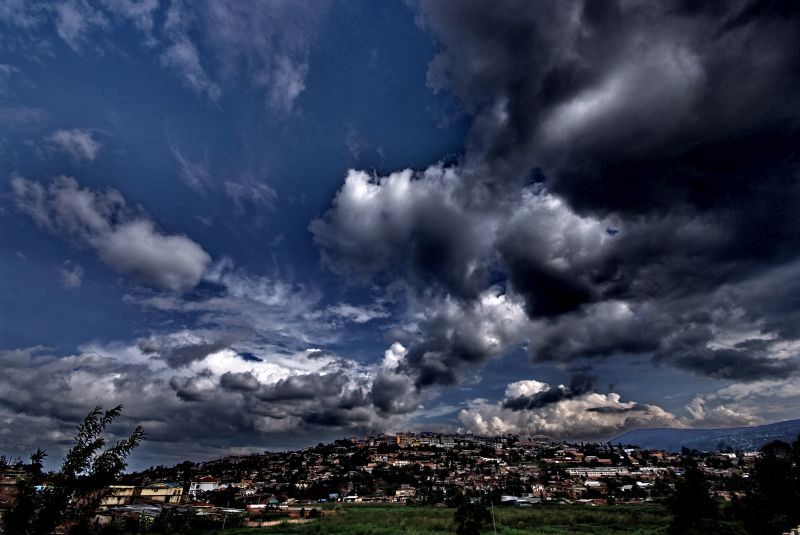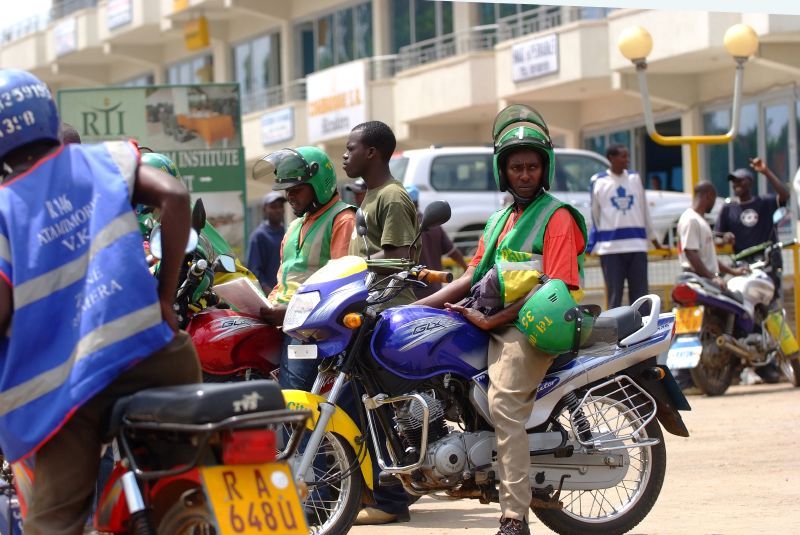Kigali the Mysterious Magnet

Kigali is Rwanda’s renewed city on the hills. (Image: Antonis Kyrou, CC BY 2.0, via Flickr)
Kigali’s Nyamrambo neighbourhood is older than the city that has grown around it. It is the insomniac multicultural heart of this city built on hills. This stubbornly undeveloped neighbourhood of saloons, hairdressers and African immigrants should be your first stop when you reach Kigali.
Leave the maze of streets and wind your way up the slopes of Mount Kigali for the uninterrupted vista of the city itself. To the west is the Nile and Lake Victoria, easily reached in a day from Kigali. To the east the city itself. Spread over a range of hills overgrown with trees it is one of the most beautiful cities in Africa. If not the world.
There are as many people living in Kigali today as were killed in the genocide in 1994. The city’s memorials to those dark times are among the most visited, sedate and sombre sites in the city. The Kigali Memorial Centre is in Gisoz, a ten minute drive from the centre of the city, honours the 250 000 victims buried in a mass grave on the grounds.
Spend a day wandering through the grounds and be reminded that the cruelty that hate unleashed has been overtaken by the power of healing. Visit the hotel that inspired the film Hotel Rwanda and be reminded of the heroics of Paul Rusesabagina, who turned the Hotel des Mille Collines into a refuge for Tutsis and moderate Hutus.
Today Kigali is a city that sleeps, mostly, early and rises with the sun. Today it is a bustling, clean, prosperous and safe city of new construction. Kigali is a city of gangs of motorbike taxis buzzing the ridges and valleys that make the city.

Buzz around Kigali on one of its ubiquitous green helmeted motorbike taxis. (Image: Antonis Kyrou, CC BY 2.0, via Flickr)
It is city where the citizens embrace its bland uniform architecture out of reverence for its bloody past. Beneath its modest surface you will find a luminous arty and musical city that pulls you into a warm welcoming optimistic embrace.
It is the mysterious magnet that and the gateway at the very heart of Rwanda. From here you can visit the Volcano National Park and hike through the rain-forest to catch a glimpse of the few remaining wild mountain gorillas. It is a strenuous 2 hour hike up steep beautiful challenging slopes through forests of orchids and bird life to the Karisoke Research Centre where Dian Fossey’s tomb is situated.
Or head west toward the Great Rift Valley and the border between Rwanda and the Democratic Republic of Congo. Here is Lake Kivu, where tourists are free to swim or hike. Like the rest of this equatorial country, be aware of the weather during the summer. Days end with remarkable thunder storms where the sky opens and the streets are flooded.
Back in Kigali drum orchestras or solitary lulunga (the eight stringed harp like instrument) musicians soundtrack the musical heart of the city. The music is hypnotic and celebrates the bravery, brilliance and humour of the people of Rwanda.
Or visit Ivuka Arts or Inema Art Village or Uburanga Art Studio to haggle over the purchase of the distinctive Rwandan Imigongo paintings. These cow dung paintings are just one of the multitude of local crafts that make a shopping trip am art pilgrimage.
Kigali, and Rwanda, is not what you expect. It’s a city of wide boulevards and shiny buildings. It is a prosperous optimistic city of warm smiles. It is a city that has not forgotten its past, but beams with pride over how far they have come.

The lush tropical beauty of the Volcanoes National Park. (Image: Remarkable Rwanda, CC BY 2.0, via Flickr)


